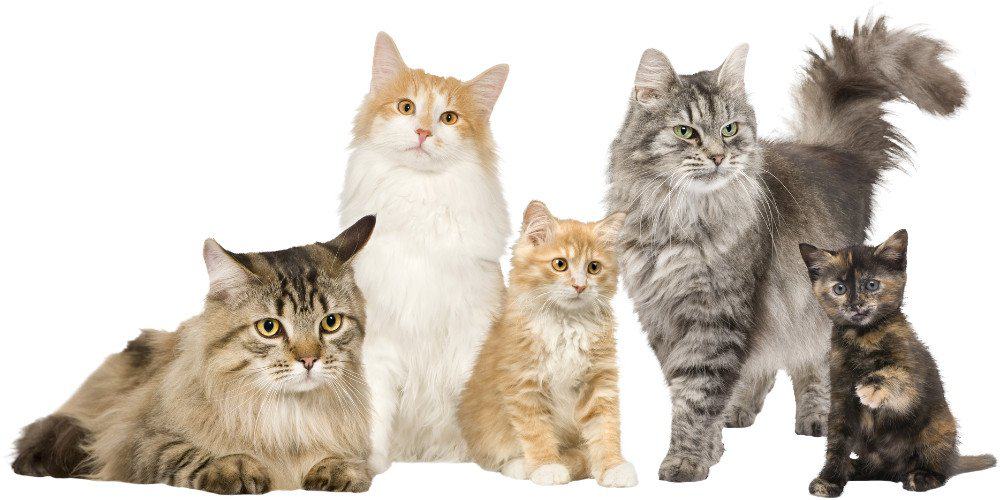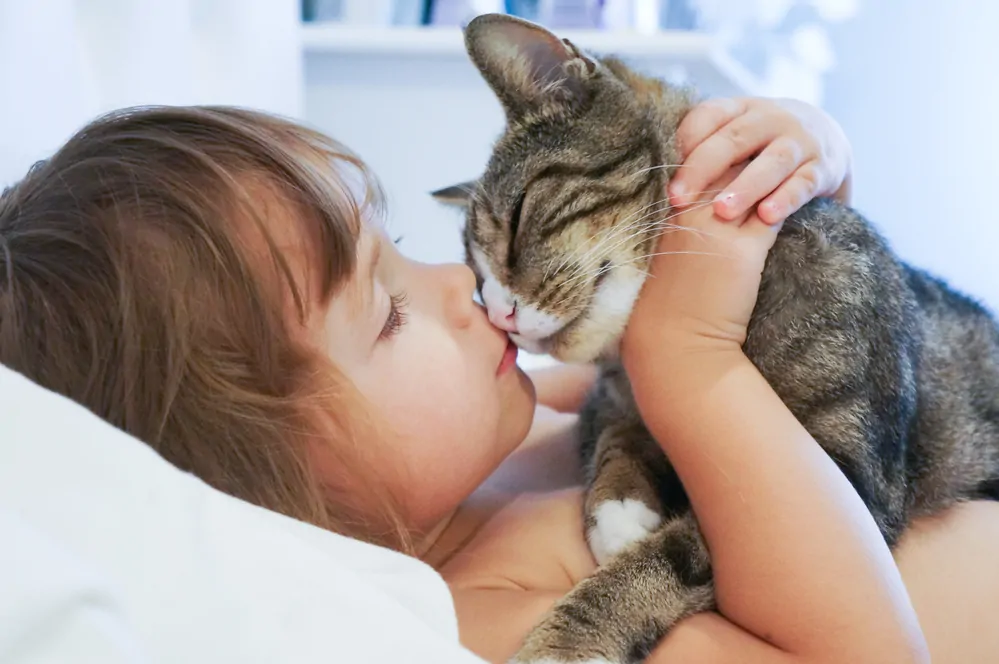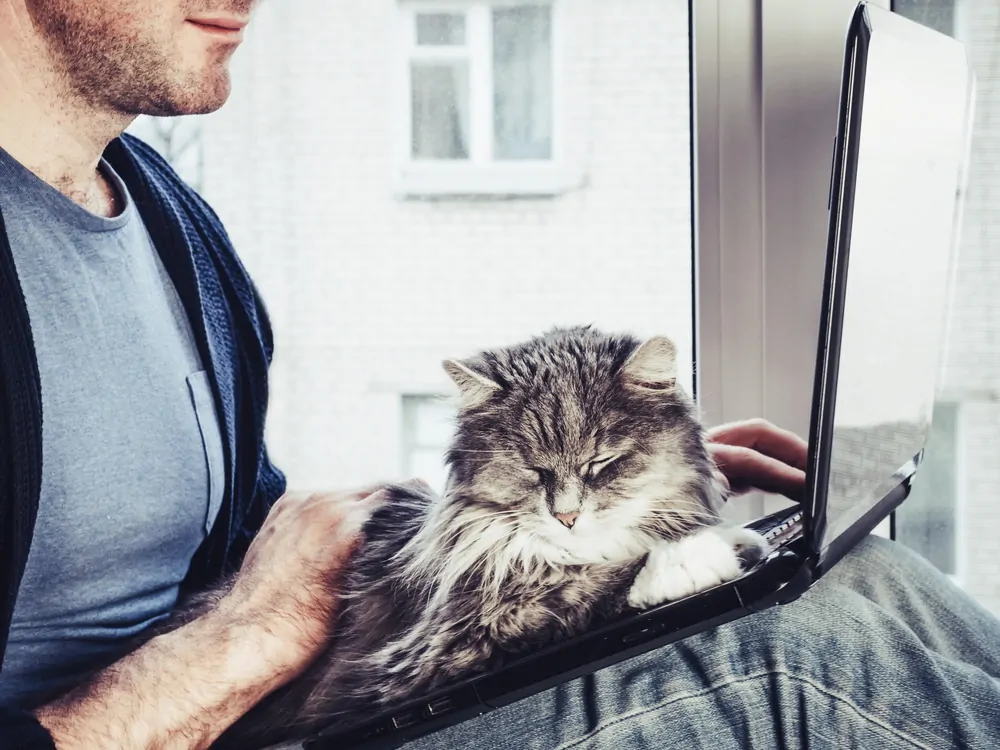Once nervous jitters are out of the way and territorial disputes are settled, cats can get along with one another at any number and can eventually form large groups. So, what do you call a group of cats?
A group of cats is called a clowder. There are lesser used descriptive nouns out there that refer to a group of cats like “glaring,” “pounce,” “cluster,” and “clutter,” all representing three or more cats.
These strange names for a group of cats each have their origins and history, so let’s take a closer look at why a group of cats is called a clowder or a glaring.
Keep reading to learn everything you need to know about what to call a group of cats.
Why is a Group of Cats Called a Clowder?
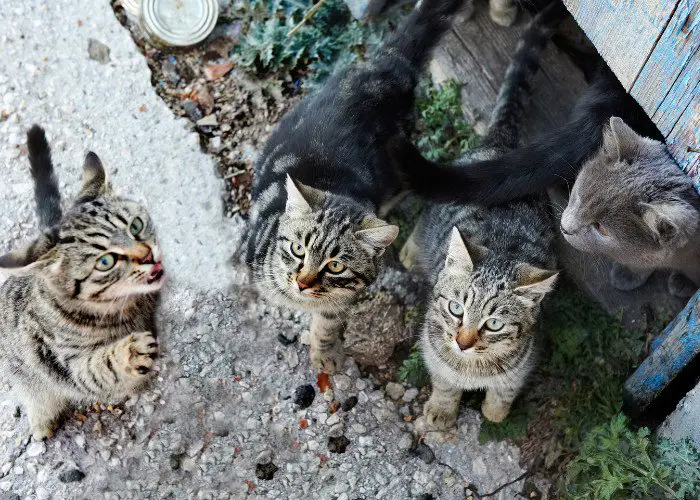
A clowder is a descriptive noun that means “a group of cats.” As mentioned above, this and other terms describe a group of three or more cats.
It is derived from the Middle English word “clodder” meaning a “clotted mass.” This is where we get the term for blood clotting, but its origins stem from “clotter,” which means “to huddle together.”
“Huddled together” is the definition of why it is used to describe a group of cats. This makes sense during naps when the cats huddle together in a warm, comfortable slumber.
A clowder of cats can be of any feline species except lions. Aside from lions, it doesn’t matter what the species may be. They’ve formed a clowder if they gather in groups and are cats.
What is a Glaring of Cats?
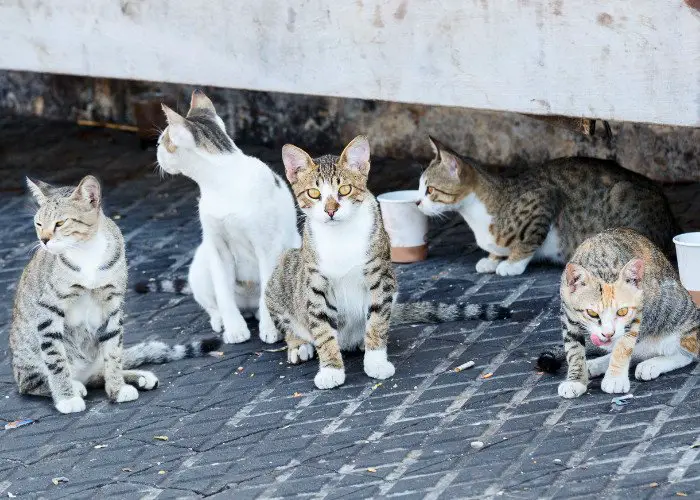
A glaring of cats is when four or more cats in a group only tolerate each other. They are not comfortable with each other yet but aren’t at one another’s throats either.
It’s almost as if each cat has the others on some form of probation or a period of observation.
After a while, if some trust is accrued and they’ve accepted each other, they will shift from being a glaring of cats and qualify to become a clowder of cats.
What is a Group of Feral Cats Called?
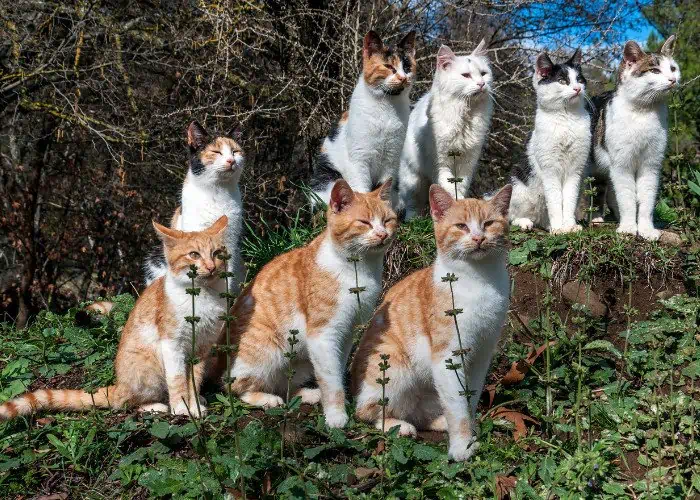
Feral cats often live in family groups called “colonies.”
As housecat populations boom, so do the number of feral cats all over the planet. Feral cats are those who have shunned domestication and have transformed instinctively back to their wild roots.
Or, they have been born and raised in the wild by other feral cats, never having dealt with humans in a pet-like capacity.
What is a Pride of Cats?
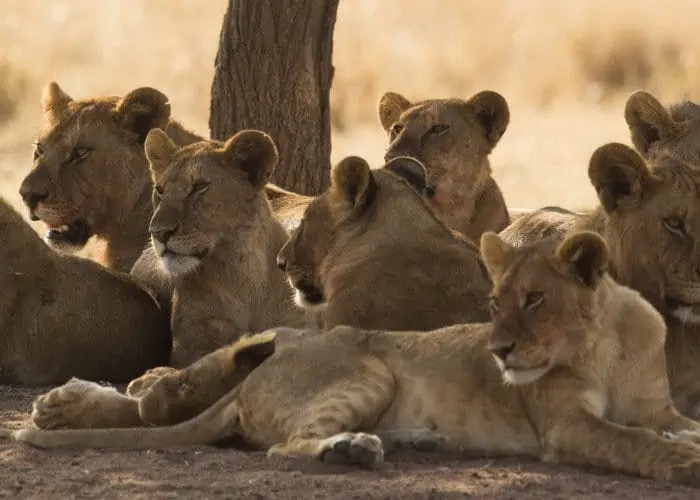
If you initially thought that a group of cats was called a “pride,” you’re only partially correct. There are only one species of cat that has the collective noun “pride” associated with them, and they are lions.
So, technically they’re cats; you’d be right in that regard. But unless you’re talking about lions, you’re misusing the word.
What is a Group of Kittens Called?
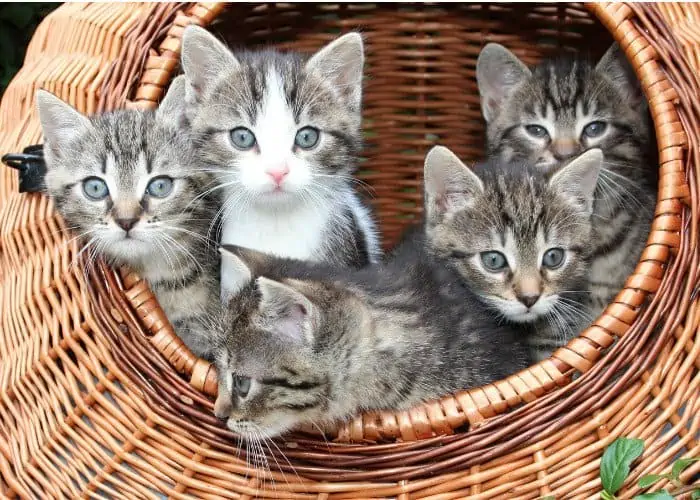
The answer to this one may surprise you.
I’d bet your initial answer to this question would be a “litter of kittens,” right?
Well, although we use that phrase to describe a group of kittens casually, officially, it’s incorrect.
The “correct” collective noun used for a group of kittens is called “a kindle of kittens.” Like clowder, kindle is another Middle English word.
There are two variations behind the origin of this word, one being an offshoot of “kindelen,” which means “to give birth to,” and also “kindel,” which means “offspring.”
Specifically, a kindle of kittens describes a group of kittens who all share the same mother cat. As one may expect, very similar to how we use the word “litter.”
Though kindle is the more official term used by those in the know, litter is more popularly used. One that is far more obscure than either of the two would be “intrigue.” “An intrigue of kittens.”
Final Thoughts
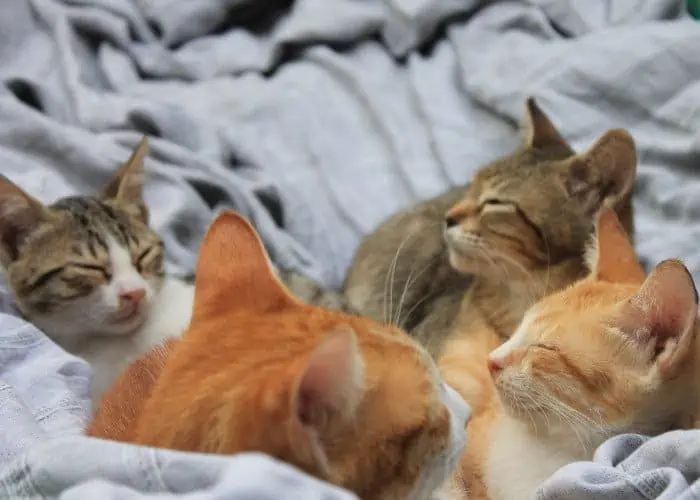
Watching a group of cats can be extremely entertaining; some say the bigger the group, the more fun they get. That is, of course, until it’s two o clock in the morning and people are struggling to sleep through cats howling in heat.
After reading this article, you’re at least equipped to correctly refer to a bunch of cats. So, when you complain about listening to the heat-fueled howling outside, you can be grammatically correct in venting over the clowder of stray or neighborhood cats that kept you up all night.
Cats are famously great pets and are a lot of fun around the house. Multiple cats can be even better!
However, owner beware- cats can be highly destructive in numbers greater than three or four, and if they’re not fixed, they can outnumber a home’s human population in a hurry.
The moral?
Unless you’ve got all day every day to clean up the house, chase after cats clawing away at everything, and have the money to spend a constant arm and a leg on kitty litter, cat food, and home repairs, try to avoid forming a clowder of cats within your home.
Related Questions:
1. How To Keep the Peace in a Clowder of Cats
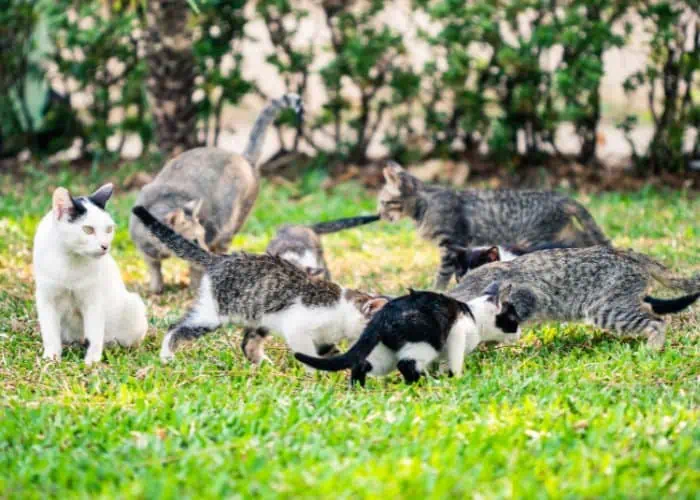
Cats can often be… well, catty with one another, getting into scuffs or fights over things like food or territory. If you’ve got a clowder of cats living in or around your home, there are a few tips and tricks to keeping the peace between them.
First, feed each of them in a different space in or around your home. Because cats typically hunt and eat alone, they will have the same instinct even when fed cat food and feeding in the same area may cause them to get territorial.
Any clowder of cats will have established its hierarchy, so if you’re introducing a new cat, do it gradually and carefully. The clowder may feel threatened by the arrival of a new cat, so try to ease them into the clowder.
2. Is There an Alpha When There’s a Group of Cats?
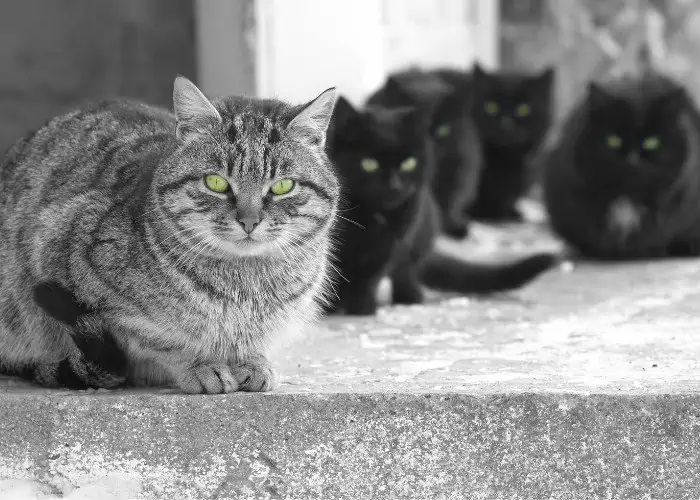
When it comes to a clowder of cats, there isn’t a well-defined hierarchical structure; it’s more like a series of understandings. However, as is true in the animal kingdom, the strong survive.
A dominant cat can run the show if it imposes its will upon the weaker, younger, or smaller cats. With that said, cats are cats.
A dominant cat (or an alpha cat) isn’t a leader, as you’d observe with a wolf pack, for example, or other species that have a well-defined role for an alpha. You might say this is the difference between being social animals and packing animals.
Cats want to eat, drink, breed when they feel like it, play around when convenient, and sleep comfortably when it’s time for a nap.
As long as all the other subordinate cats stay out of the alpha’s way concerning any of these things, there isn’t a problem.
